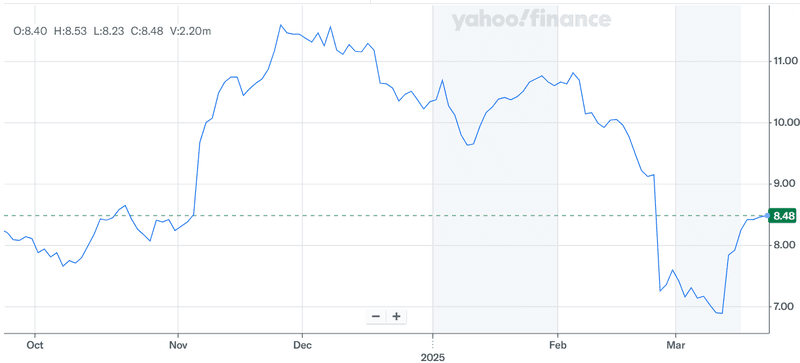AvidXchange Holdings: Is This Fintech Player The Next Big Buyout?

AvidXchange Holdings (NASDAQ:AVDX) has been in the spotlight following reports that the fintech firm is evaluating a sale after receiving takeover interest. According to Bloomberg, the company has engaged an adviser to explore its options after approaches from multiple buyers, including private equity firms. The company has been working on automation and AI-driven efficiencies, which have played a pivotal role in its expanding profit margins in recent times and have also helped it draw eyeballs. However, AvidXchange has also been dealing with macroeconomic headwinds affecting its middle-market customer base which also poses its fair share of challenges. Let us take a closer look at the company and analyze what could make it a worthy acquisition target.
Dominant Position In Middle-Market AP Automation
AvidXchange has carved out a leadership position in the middle-market accounts payable (AP) automation space, an underpenetrated segment with significant growth potential. The company's scalable AP automation and payment solutions cater to an estimated $2.7 trillion B2B payments market, serving over 8,500 buyer customers and 1.4 million supplier customers. Unlike enterprise-focused competitors, AvidXchange has tailored its solutions for mid-sized businesses that seek cost-effective and efficient AP automation. This niche positioning creates a high barrier to entry for competitors and enhances customer stickiness. Additionally, the company's deep ERP integrations and embedded payment partnerships with platforms like AppFolio, M3, and Buildium expand its distribution network and revenue opportunities. These strategic partnerships drive strong customer acquisition and retention, positioning AvidXchange as a compelling platform for a potential acquirer looking to gain a foothold in the growing AP automation market.
AI-Driven Product Innovation Enhancing Revenue Growth
AvidXchange’s focus on innovation, particularly in AI-driven payment solutions, is a critical factor in its attractiveness as an acquisition target. The company has significantly invested in its AvidPay 2.0 platform, which enhances payment processing capabilities through AI-driven automation, real-time payment configuration, and fraud reduction. AI-powered initiatives have streamlined transaction workflows, increased e-payment penetration, and improved payment yield. Additionally, the company’s Payment Accelerator 2.0 platform has been gaining traction, offering suppliers expedited invoice payments while generating new monetization streams for AvidXchange. The ability to eliminate paper checks, which still account for 55% of its transaction mix, presents a clear opportunity for cost savings and increased adoption of digital payment solutions. These innovations are particularly valuable for acquirers seeking to enhance their fintech portfolio with cutting-edge automation capabilities that drive efficiency and revenue growth.
Strategic Acquisition Potential For PE Firms & Industry Giants
AvidXchange presents an attractive acquisition opportunity for both private equity firms and large financial technology or payments companies. For private equity sponsors, the company’s strong cash flow, margin expansion, and ability to scale make it a prime candidate for a leveraged buyout. PE firms could enhance AvidXchange’s profitability by optimizing costs further while leveraging its established market position to drive growth. Alternatively, a strategic acquirer in the payments or software space—such as a global payment processor or ERP software provider—could integrate AvidXchange’s AP automation solutions to expand its own product offerings. Companies like PayPal, Stripe, or Bill.com, which have been actively expanding their B2B payment capabilities, could find AvidXchange’s ecosystem of middle-market customers highly synergistic. Similarly, larger financial institutions seeking to enhance their payment automation capabilities may view AvidXchange as a valuable addition to their portfolios.
Conclusion: A Calculated Bet for Investors?

Source: Yahoo Finance
From a valuation standpoint, the company is trading at an LTM EV/ Revenue multiple of 3.23x (down from 6.13x in December 2023) and an LTM EV/ EBITDA of 41.77x which may seem high but it is important to highlight the fact that the company turned EBITDA positive about 3 quarters ago and this multiple has been contracting ever since. Thus, it wouldn’t be an exaggeration to say that AviXchange’s stock is the cheapest it has ever been, ever since the company got listed. Moreover, its strong financial performance, market leadership in AP automation, AI-driven innovation, and takeover interest make it an intriguing acquisition target. However, it is critical to note that while the company’s stock has surged on speculation of a buyout, an acquisition is never guaranteed, and valuation considerations will play a crucial role in any deal. We see a decent chance of the company receiving good offers but whether a deal materializes or not is to be seen.




